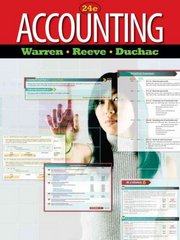1. KV Incorporated acquired LW Company during 2012. KV's report on ICT R was prepared without on assessment of LW's ICFR. LW represents 1.796 of KV's consolidated assets and .796 of KV's consolidated pre-tax income. 2. Howard Electric Inc. evaluates its ICFR based on the Turnbull Report's internal control guidance instead of the COSO framework. 3. The auditor identifies a significant deficiency. Management's report on ICT.R does not discuss this deficiency. 4. During its evaluation of ICFR, the management of MKB Manufacturing identifies a material weakness. Management describes this weakness in detail in its report on ICF K and the auditor agrees with management assessment. 5. The auditor identifies several ICFR deficiencies, but the probability of a material misstatement due to these deficiencies is remote. 6. The auditor identifies a material weakness, but managemers disagrees with the auditor's conclusion and refuses to modify its report on ICFR. 7. Approximately 35%% of KLM Company's sales are on credit. KIM's ouditor is unable to test controls related to KLM's allowance for doubtful accounts. However, the auditor is satisfied that there are no material weaknesses in ICT R related to any other areas of the financial statements. 8. The auditor identifies a material misstatement, which management refuses to correct. 9. The auditor identifies a material misstatement. However, management corrects the misstatement before the financial statements are issued. 10. During its evaluation of ICFR, Reno Financial Services, Inc. identifies a material weakness related to accounting for capital leases. Reno acknowledges the material weakness in management's report on internal controls but describes it in vogue terms. The auditor agrees with management's assessment that a material weakness exists. I1. The auditor identifies an immaterial fraud perpetrated by the company's CFO. 12. The auditor learns of a subsequent event but is unable to determine the effect of the everat on the company's ICFR Refer to the reporting requirements in PCAOB Auditing Standard 2201 or other audit guidance. For each situation above: 1. Indicate what type of internal control andit opinion is required by PCAOB auditing standards (using shorthand language such as: qualified, disclaim opinion, extra paragraph indicating , etc.) or indicate 2. that an unqualified opinion is allowed. Also, indicate any other action required of the auditor (such as: inform the SEC, modify the auditor's opinion on the accompanying financial statements, etc.)







